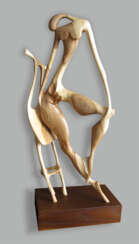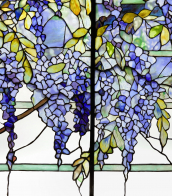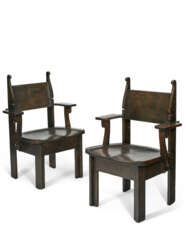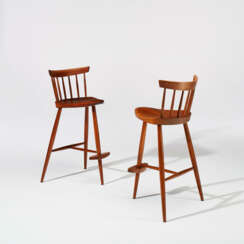стулья модерн









Josef Hoffmann, an Austrian architect and designer, is renowned for his influential contributions to early 20th-century design and architecture. As a founding member of the Vienna Secession and the Wiener Werkstätte, Josef Hoffmann's work is celebrated for its pioneering simplicity and functional elegance.
Josef Hoffmann's designs, which span furniture, decorative arts, and architecture, are distinguished by their minimalistic yet expressive style. His ability to blend aesthetics with functionality marked a significant departure from the ornate styles of the time, influencing modern design principles. Notable works include the Stoclet Palace in Brussels, a masterpiece that showcases his innovative approach to art and architecture.
His creations are preserved in prestigious museums worldwide, including the Museum of Modern Art (MoMA) and the Metropolitan Museum of Art, providing insight into his visionary approach to design. These institutions house collections of Hoffmann's furniture and decorative objects, reflecting his enduring impact on design and architecture.
For collectors and experts in art and antiques, Josef Hoffmann's work offers a study in the evolution of modern design. By subscribing to updates, enthusiasts can stay informed about exhibitions, sales, and academic research related to Josef Hoffmann, deepening their understanding of his contributions to the art and design world.


George Nakashima (Japanese: 中島勝寿) was an influential Japanese-American artist, architect, and furniture maker. He is renowned for his mastery of woodworking and his philosophy of incorporating natural materials and traditional craftsmanship into his designs.
Nakashima's furniture designs emphasized simplicity, functionality, and the integration of nature into the living space. He believed in the spiritual essence of the materials he used and aimed to create pieces that harmonized with their surroundings and brought a sense of peace and tranquility to the users.
His signature designs often featured clean lines, elegant proportions, and meticulous joinery techniques. Nakashima's work showcased a blend of Japanese aesthetics, American modernism, and his own unique artistic vision.


Charlotte Perriand was a French architect and designer. Her work aimed to create functional living spaces in the belief that better design helps in creating a better society. In her article "L'Art de Vivre" from 1981 she states "The extension of the art of dwelling is the art of living — living in harmony with man's deepest drives and with his adopted or fabricated environment." Charlotte liked to take her time in a space before starting the design process.


Arne Emil Jacobsen is a Danish architect and designer, the founder of the Danish Functionalism style.
He studied at the School of Architecture at the Royal Danish Academy of Fine Arts, and began working as an architect in the 1930s. Inspired by Art Nouveau, he designed several public buildings, including the Aarhus City Hall. In collaboration with Flemming Lassen, he first created a comprehensive overall interior design, including furniture, fixtures, plumbing and other details. After World War II, Arne Jacobsen made a name for himself both in Denmark and around the world.
For six decades, Arne Jacobsen was at the forefront of Danish architecture, creating visionary works of architecture that still look contemporary today. His projects often included both the building itself and the overall interior design as well as the design of the surrounding landscape. The combination of architecture and design is one of the constant characteristics of Arne Jacobsen's work. In projects such as the SAS Royal Hotel (1960) and St. Catherine's College in Oxford (1964), he not only created the architecture, but also designed every detail of the interiors, turning them into a true work of art.
In addition to architectural structures, Arne Jacobsen created a number of highly original chairs and other furniture. From his studio came avant-garde and innovative furniture, lamps, patterns, clocks, cutlery and glassware that are still in demand today.


Arne Emil Jacobsen is a Danish architect and designer, the founder of the Danish Functionalism style.
He studied at the School of Architecture at the Royal Danish Academy of Fine Arts, and began working as an architect in the 1930s. Inspired by Art Nouveau, he designed several public buildings, including the Aarhus City Hall. In collaboration with Flemming Lassen, he first created a comprehensive overall interior design, including furniture, fixtures, plumbing and other details. After World War II, Arne Jacobsen made a name for himself both in Denmark and around the world.
For six decades, Arne Jacobsen was at the forefront of Danish architecture, creating visionary works of architecture that still look contemporary today. His projects often included both the building itself and the overall interior design as well as the design of the surrounding landscape. The combination of architecture and design is one of the constant characteristics of Arne Jacobsen's work. In projects such as the SAS Royal Hotel (1960) and St. Catherine's College in Oxford (1964), he not only created the architecture, but also designed every detail of the interiors, turning them into a true work of art.
In addition to architectural structures, Arne Jacobsen created a number of highly original chairs and other furniture. From his studio came avant-garde and innovative furniture, lamps, patterns, clocks, cutlery and glassware that are still in demand today.







































































